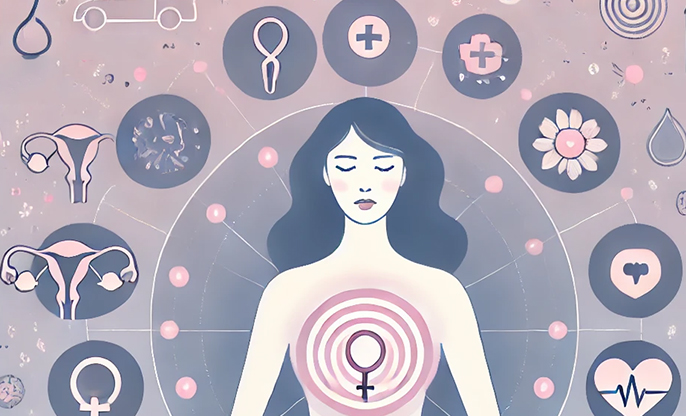
Perimenopause - it's like the prelude to a new phase of life, marking the winding down of our reproductive years. It can start as early as our late 30s and stretch out over several years, bringing a suitcase full of changes and a bit of chaos to our bodies and emotions. It’s when our ovaries start a slow dance, sometimes skipping a beat, reducing estrogen, and signaling that menopause isn't far behind.
What’s Happening
to Us?
Our periods might get quirky, coming and going as they please, sometimes light, sometimes heavy. We might feel warmth flooding our bodies out of nowhere, day or night - those notorious hot flashes and night sweats. Sleep might play hard to get, and our moods? Well, they can swing high and low on the hormonal tide.
Feeling the
Shifts
It’s not just the unpredictability of periods or the surprise of a hot flash. We might notice our mood takes on a life of its own, joy one moment, tears the next. Then there’s the bedroom - where things could feel a bit dry, making intimacy more of a challenge. And while we're trying to keep everything else in balance, our fertility starts to whisper it's goodbyes, making conception trickier than it used to be.
Our Strategy in
This Transition
How do we handle this? It’s about finding balance. Keeping
active, eating well, and managing stress are my starting points. Some of us
might think about Hormone Replacement Therapy (HRT) to smooth out the rougher
edges of these changes, but it’s a chat we need to have with our doctor to
weigh what’s best for us.
And there are other ways, too. Maybe it's finding calm in yoga, exploring herbal remedies, or just making sure we get that quality time with friends who uplift us and share this journey.
Supporting Each
Other
It's not just a personal journey; it's something we can share. Talking about what's happening, both with our loved ones and our doctors, helps. It's not just about seeking relief but also about understanding and adjusting to our evolving selves.
Perimenopause is a chapter of change, sometimes challenging, but also a gateway to a new phase of freedom and growth. It's a natural part of our life’s cycle, one that asks for self-care, patience, and support. As we navigate these shifts, let's embrace them with grace and strength, knowing that this transition heralds a new dawn of possibilities. Let's keep our spirits high and our support network strong, ensuring we step into menopause empowered and ready.


